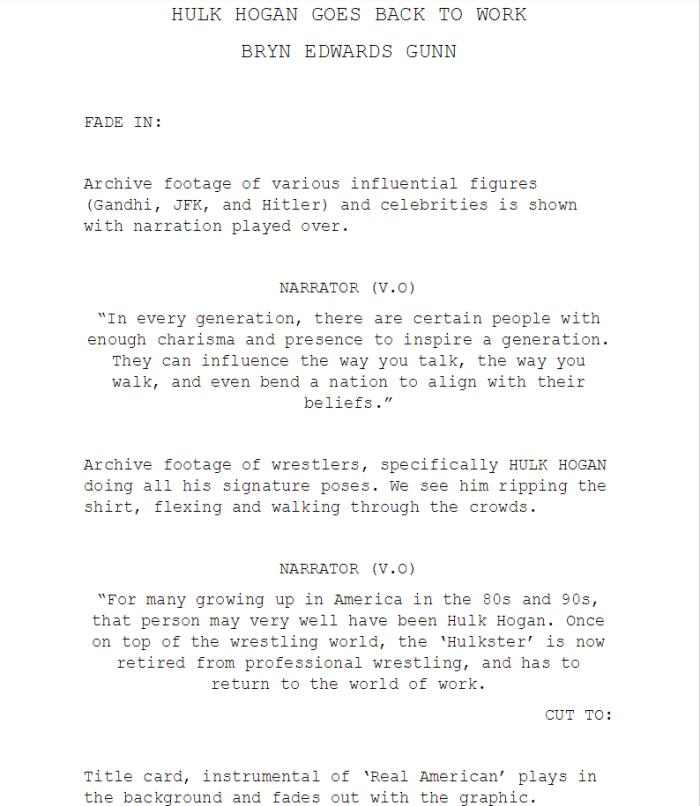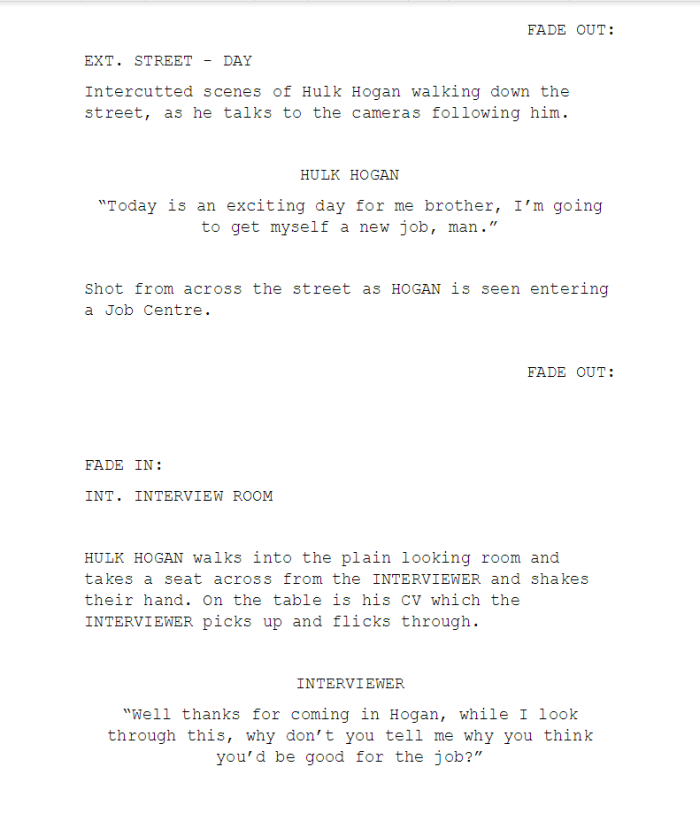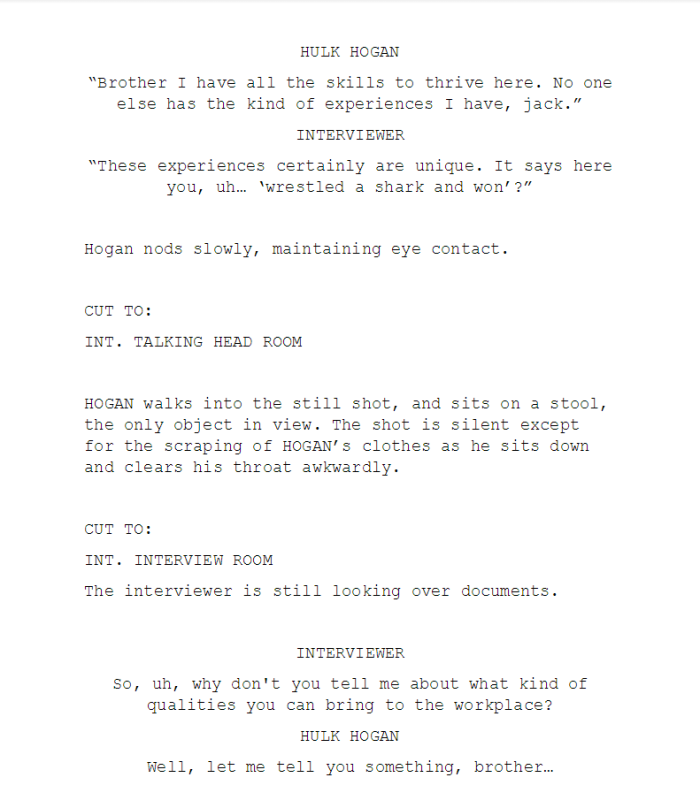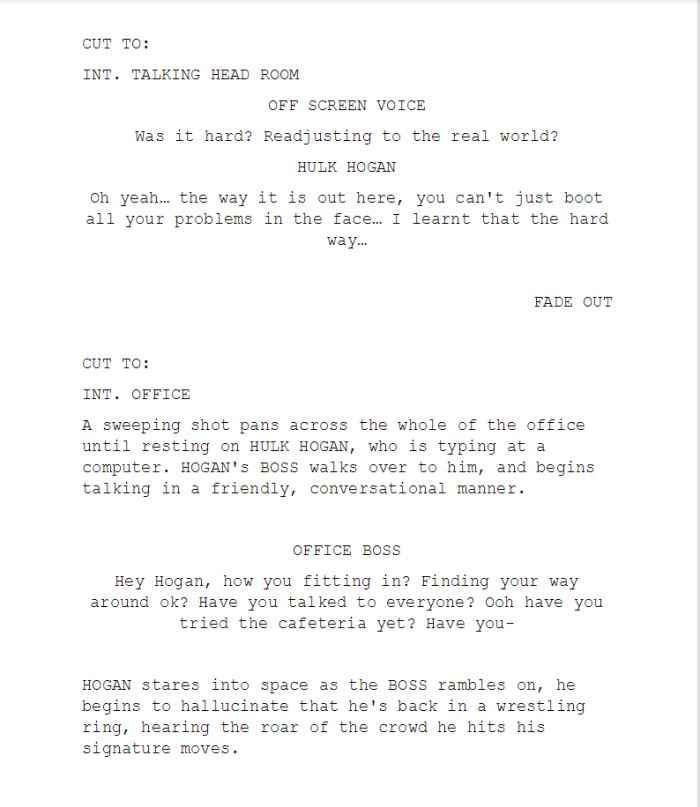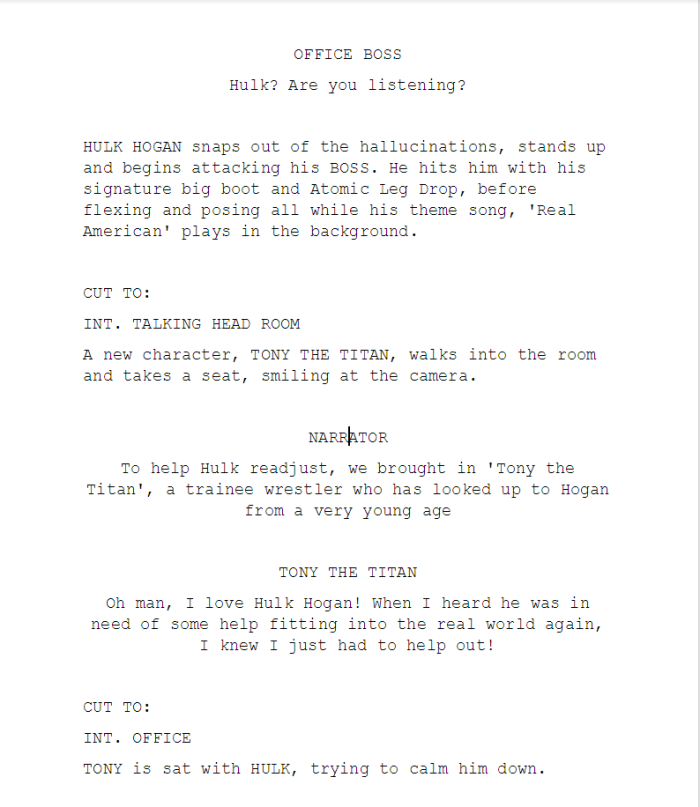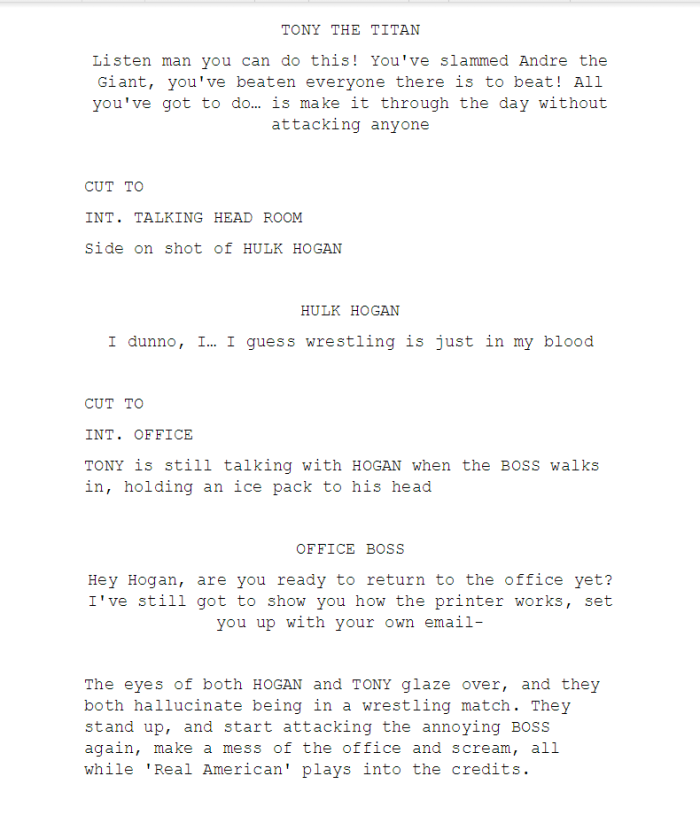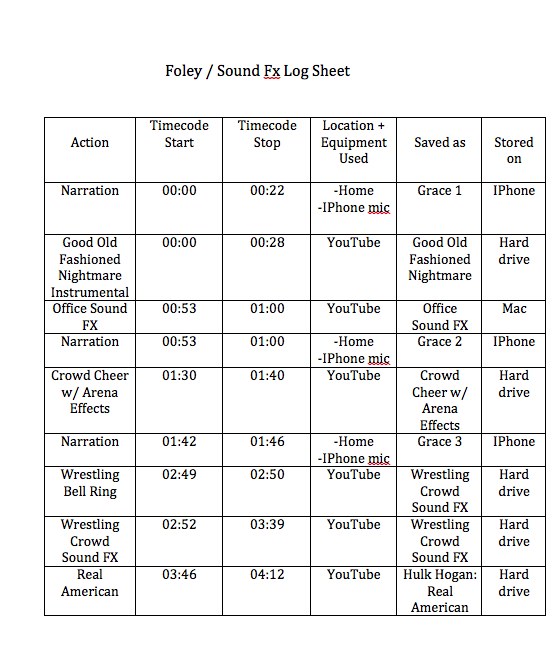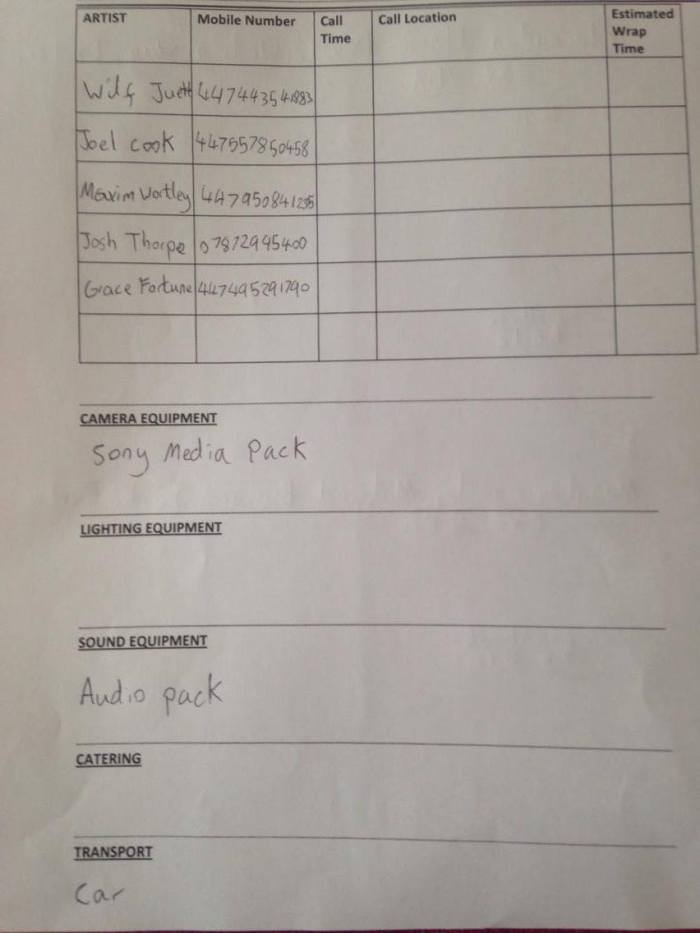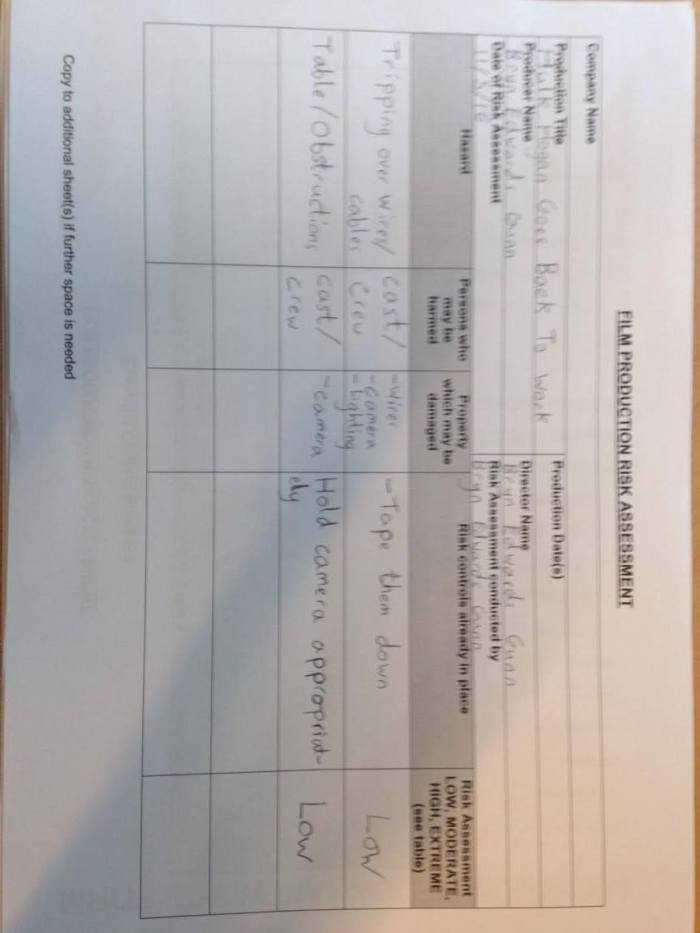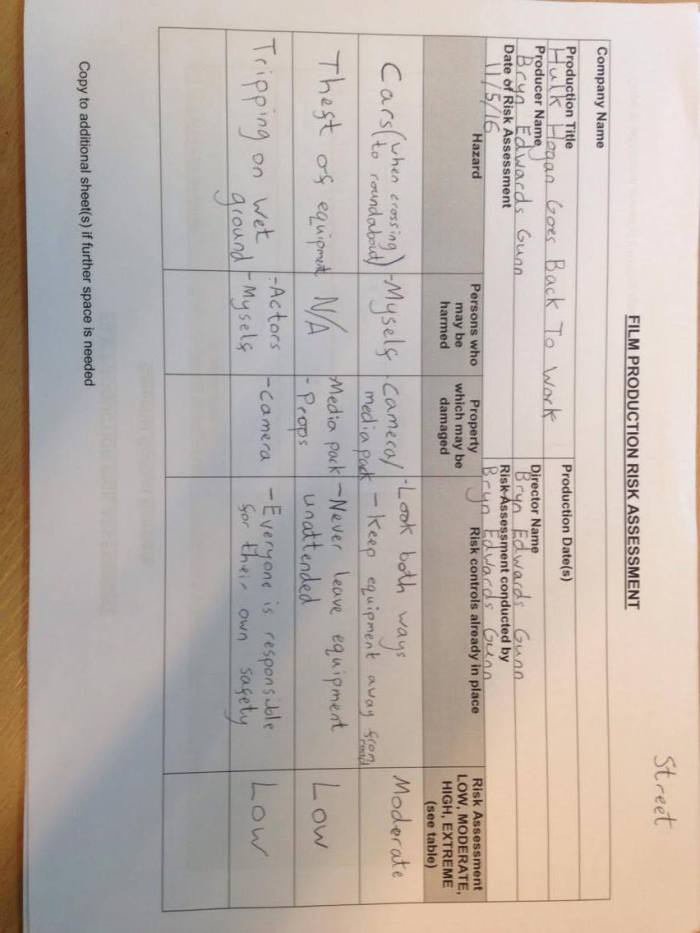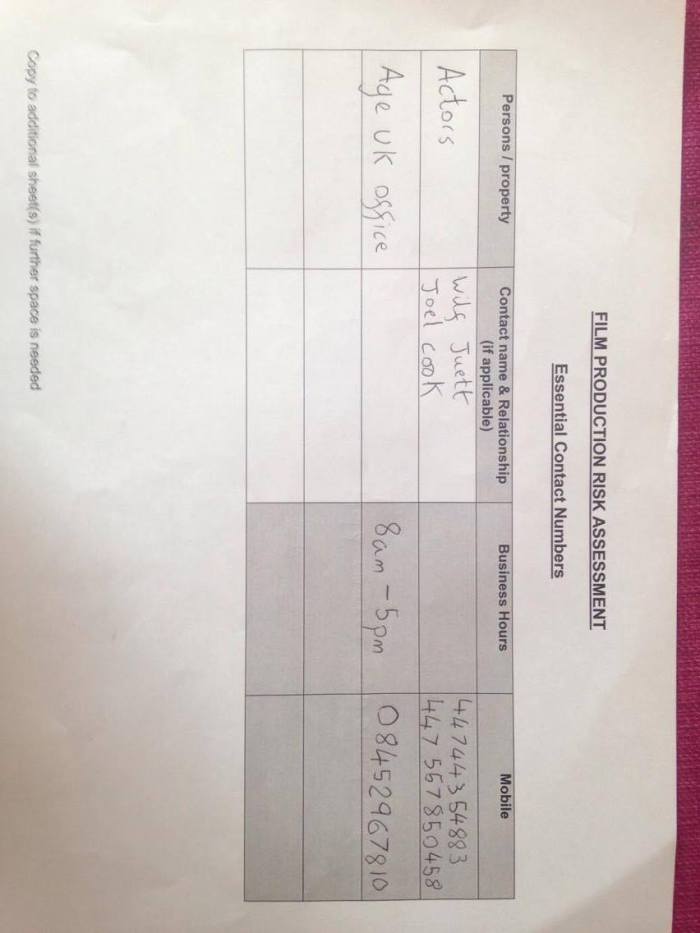13 April
I’ve added to my mind map the potential locations and actors I will be using. All the cast are confident in acting and most take Performing Arts. Some roles I still need to clarify such as the person that’ll interview Hogan when he goes to get a job and various extras. These are minor roles and I’ll probably be able to fill them in the future.
I’m still scouting out various locations for the office setting. Ideally it would be empty, bland looking and available at day time. I’ll have to ask permission to use the TV Studio, but I’ve seen it used for filming before.
15 April
I started work on my case studies as part of my research. I’ve decided to look at ‘The Office’, ‘Parks and Recreation’ and ‘Wrestling Isn’t Wrestling’. I’ve chosen these three media products because they relate to my film and i can learn from them and translate that knowledge into my piece. The Office and Parks and Recreation are both popular mockumentaries that I hope to be inspired by in terms of shot types and style. Wrestling Isn’t Wrestling is a short film targetted at a mainstream audience that aren’t neccesarily wrestling fans. As my audience will undoubtably have the same the types of people, I could learn a lot.
20 April
Today I thought of how I might use the green screen in the TV room in my film. Having more technical depth to my film might make it more impressive, and it would be a useful skill to develop. My idea was to have the wrestlers attacking the office workers and, in their head, they’re in the wrestling ring with a huge audience cheering in the background.
I also completed my second case study on Wrestling Isn’t Wrestling.
21 April
Today I started surveying people around college. As the 16-25 age range was going to be my target audience, their answers would directly influence my film. I’m seeking mostly quantitative research right now, and then I’ll do a follow up case study for qualitative. I’m asking about what comedies they enjoy. Most of the people I’ve talked with so far have seen The Office and like the mockumentary format, which is good news. Due to such a large of people saying this, I can confirm that mockumentaries are not niche, which makes finding a target audience much easier.
27 April
I looked at techniques used in mockumentaries using this article.
28 April
I finished surveying people and studied the results I got here. Now that I have this information on my target audience, I can begin taking this into account and make adjustments as I go. I also analysed the focus groups I did but was unable to upload the audio.
4 May
I completed my proposal which contains the logline, synopsis, characters, locations, audience, budget and funding. I also finished my third case study on Parks and Recreation.
Later I did some technical research on green screen. I experimented in Final Cut Pro and even made a short video. It was fun to mess around with and I got to add a skill to my repetoire.
12 May
I completed my research evaluation and finished that stage of production. On reflection I assessed how useful the research I conducted was, and how it will affect my film in the long run. Now I can move on to pre-production.
13 May
The first pre-production I did was my location recces and risk assessments. I went to my desired locations, the exams office, TV Studio and the Job Centre. I filled in the forms and took photos for each of them. While I was there I also determined what risks may be present, and considered how I could minamise these risks. Again I wrote this on my sheets.
14 May
Today I did some more pre-production sheets. I finished the call sheet, screenplay, consent form and script breakdown. I also researched different props for my major characters and explored use of props, but decided that I most likely wouldn’t need anything.
15 May
I was unable to meet the pre-production deadline. This was due to personal reasons and I don’t have much left to do. I’ve done most of my storyboard, although I am struggling with the drawing aspect.
24 May
I’m now signed off from pre-production and I’ve made a schedule for filming over half term. I’ve communicated with everyone and have worked out that Friday the 3rd of June would be the best date. This is quite close to my deadline so until then I’ll be editing archive footage and collecting shots from around the city.
29 May
I’ve finished the intro to my film, comprised mostly of archive footage with narration by my friend. I’m proud of this part as it looks like the start of a real documentary, in my opinion.
3 June
Today was the day I originally planned to film, but that fell through. This was stressful uyt out of my control. We’ve rescheduled for Sunday, and I’ve been assured that this time no one will cancel.
5 June
Today I filmed a majority of my piece. I used the new office I had found, and we were able to get good footage quickly. I’m feeling far more positive now. The only shots I have yet to get are the ones in town, which won’t take very long.
7 June
I started editing the footage I already have. It’s coming together well so far and I managed to get a large ammount of it done just today. The only footage I’m missing is the shot outside the Job Centre.
8 June
I filmed the Job Centre shot and continued editing. I made a few adjustments to perfect the presentation. I’ve also added music to the intro and credits which I think really fit the feel and theme well.
1o June
I finished! I spent today putting on the finishing touches and then uploading it to YouTube. The people I’ve shown have really liked it and I’m very satisfied overall!
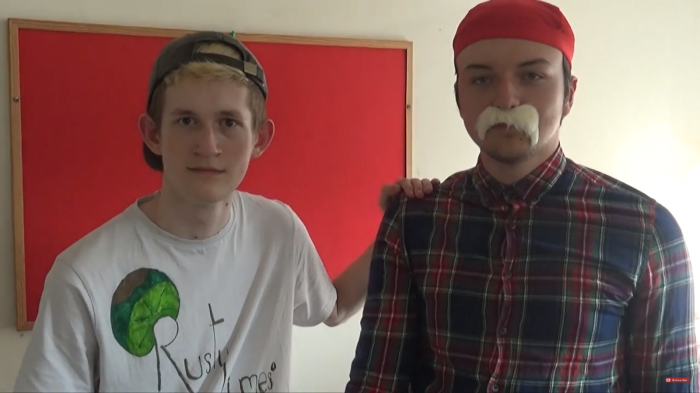
 Opening scene in the city
Opening scene in the city Interview scene
Interview scene Talking Head segments
Talking Head segments All office scenes
All office scenes






